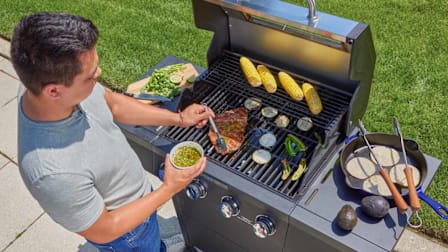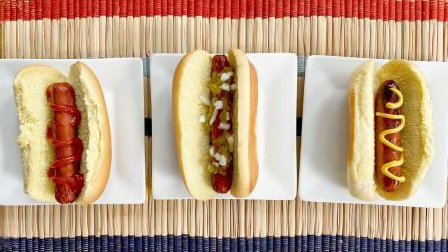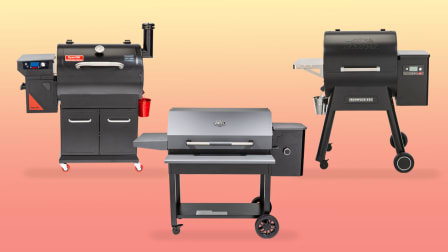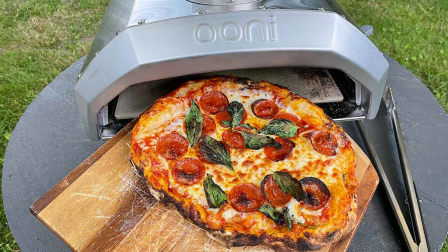How to Grill in Your Oven (Hint: Use the Broiler)
You can get beautiful browning without ever firing up a grill
When you shop through retailer links on our site, we may earn affiliate commissions. 100% of the fees we collect are used to support our nonprofit mission. Learn more.
What do you do if you’re longing for the taste of grilled kebabs, burgers, steak, or eggplant, but you don’t have a grill? Try your oven.
“The broiler is perhaps the best kept secret lurking inside your oven, and plenty of people probably never use it,” says Tara Casaregola, CR’s test engineer in charge of range testing. “It gives you intense heat for searing.”
Broiling is essentially upside-down grilling—radiant heat from above vs. radiant heat from below. Many of the best steakhouses in the country, including the famous Peter Luger Steakhouse (founded in Brooklyn in 1887), broil their steaks rather than grill them.
How to Grill in Your Oven
Use the Right Temperature
On some ranges, you can set a precise temperature for broiling. On others, there’s only low and high broil, which can make it a little trickier to cook foods right. Low broil is usually between 400° and 450° F; high broil, between 450° and 550° F. Use low broil for thicker foods that need to go to a high internal temperature, like chicken breasts. That setting will produce nice, crisp skin, like your grill, but still allow the food to cook through without burning. If you’re cooking sliced veggies, such as eggplant or zucchini, use high broil to get a nice quick char on the outside without overcooking.
Select the Correct Rack Position
Broiling, like grilling, is a balancing act. If food is too close to a direct flame, it can brown or burn on the outside before it’s cooked through. Worse, it can even ignite and start a fire. If the food is too low, the broiling element can’t work its magic, and your food will just look like it was baked or roasted. Most ovens have four to seven rack positions. The higher rack position, the closer food is to the broiling element. Check the owner’s manual to see which rack positions your range manufacturer recommends for broiling different foods and try those positions first. If you don’t like the results, experiment with different rack positions.
Check the Door
Follow the manufacturer’s recommendation on whether to broil with the door open or closed. You won’t need to leave the oven door fully open, though. Start with the door closed, then pry it open slowly until you feel the door stop flowing freely—generally about 4 inches. The door will stay open on its own in this position. For some ranges, this opening allows air to circulate, promoting even browning. Keep watch if you’re broiling with the oven door open, and don’t let young kids and pets in the kitchen.
If Your Oven Has Convection, Use It
A convection setting activates a fan in the back of the oven to circulate hot air evenly. If your range has a convection-broil setting, try using it to help foods crisp up and brown evenly, just as they would on a grill. Most manufacturers recommend keeping the door closed when you convection-broil because the fan itself circulates the heat evenly.
Use the Right Pan
You should always broil using the broil pan that comes with your oven or a suitable replacement recommended by the range manufacturer. Broilers produce intense heat, causing the fat in foods to render quickly. Broiler pans are specifically designed to facilitate fat dripping away so that it doesn’t accidentally ignite. They have a lower, solid pan to catch drippings and a slotted upper pan that allows rendered fat to drip down. On a grill, this happens naturally as fat drips away from food through the grates as it cooks.

















